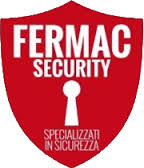
They allow you to understand potential implications for cash flow to assist with the decision-making process. As mentioned earlier, traditional bank accounts have a limited amount of FDIC coverage—only up to $250,000 per account is insured. This leads many nonprofits to open several different accounts that each hold $250,000 to maintain enough FDIC coverage. However, this is a tedious process that makes bookkeeping difficult and often limits your ability to access funds. While some of these revenue streams require you to spend time and effort submitting detailed applications, you can tap into non-cash donations easily.
- A sweep account is a type of brokerage account that provides you with more FDIC coverage than you could typically access in a single account.
- Though it’s a bold move in a competitive landscape, having an honest, upfront conversation with donors about your overhead expenses may well prove worthwhile.
- Since depreciation expense is not an actual cash outflow, it needs to be added back to net income.
- There’s a concern that major backers will withdraw support if they knew the truth about operational costs.
- Having a contingency plan can help ensure that your nonprofit will have sufficient cash flow to weather the unexpected.
Uniform Grants Guidance Overhaul: A Break-Down for Nonprofits

Additionally, having a reserve fund can help nonprofit organizations build credibility with potential donors and investors. Donors and investors are more likely to support organizations with a solid financial foundation, and a reserve fund can give nonprofit organizations the stability they need to attract this type of support. Nonprofit Quarterly discusses how cash inflow can be heavily concentrated during certain times of the year, such as during an annual fundraiser. Thankfully, using the nonprofit statement of cash flows can help you with sound decision-making. If you gain $10,000 in grant funding, but spend $12,000 on programming, you’ll end up in the red and slowly deplete your reservoir of resources over time.
- Many nonprofit organizations partner with an outsourced CFO service, which verifies daily transactions, records progress, monitors internal controls, and produces financial statements.
- Simply stated, the cash flow statement summarizes an organization’s cash management.
- Our finance team created a waterfall spreadsheet that calculates excess liquidity (cash beyond upcoming needed liquidity), and we are investing that cash in U.S.
- Most nonprofits compile this report on a monthly basis, since it helps keep their spending and revenue generation aligned with their annual operating budgets.
Strategies For Nonprofits To Maximize Cash Flow Management
With an additional 11.6% of leaders reporting an expected significant increase, nonprofit organizations are preparing for increased expenses. Nonprofits are often more sensitive to changes in the budget than other organizations because their cash is often already allocated https://www.bookstime.com/ or may have restrictions on its use. Punctual cash forecasting allows a nonprofit to proactively respond to any expected change in the cash flow. The format is usually built on the budget for the year and then updated each month with actual incomes and expenses.

Applications of the Nonprofit Statement of Cash Flows
From there, we’ll provide recommendations regarding how to maintain healthy financial management practices at your organization. Proactive budgeting and forecasting practices are essential for nonprofit organizations to anticipate cash inflows and outflows accurately. By developing detailed budgets aligned with organizational goals and regularly monitoring financial performance, nonprofits can identify potential cash flow gaps and adjust their strategies accordingly. Cash flow management is crucial for nonprofit organizations, as it enables them to monitor cash inflow and outflow.

Steward your reserve funds with low-risk, high-liquidity strategies.
Effective financial management can make or break your ability to further your organization’s mission, and tracking cash flow is a foundational part of an effective management strategy. If your organization currently uses accounting software, like Sage Intacct, then it is likely you can customize nonprofit cash flow statement a statement of cash flows to be generated each month. Utilizing your accounting software to create financial reports is an accurate method because the report is pulling the data inputted during daily transactions. Cash balances can easily be verified by performing regular bank reconciliations.
Importance of Cash Management for Nonprofit Organizations
- Revenues and operating costs can change week to week, and keeping an updated forecast puts a lot of strain on the internal accounting department.
- This can help the nonprofit cover unexpected expenses or take advantage of opportunities that arise.
- Donors and investors are more likely to support organizations with a solid financial foundation, and a reserve fund can give nonprofit organizations the stability they need to attract this type of support.
- Cash balances can easily be verified by performing regular bank reconciliations.
- It can be used to identify over/underspending compared to the inflow of cash into the organization.


